|
Whether you are a runner, an athlete, a gym goer, or a walker, setting goals is a positive thing to do. It allows you to train/exercise with direction, preventing you from feeling demotivated and unsure of where you are heading. It also allows you to witness your progress, and see how far you have actually come. Setting goals is quite a simple concept that gives you direction and focus, however, I find the most beneficial part of goal setting is opening up about them. There is no reason as to why we should be shy about our goals, therefore we should feel happy to speak about them. Keeping them to yourself doesn’t help you feel any more confident about achieving them, in fact I find it makes me feel less confident that they will happen. I found this year a key example of this. I was always very shy about my goals and always kept them to myself. However, the last year I made myself announce them and reveal them to others, and I found as a result I felt more accountable to achieving them. I find myself striving for them with more determination and drive because I had explicitly stated what I was trying to achieve. Whatever your goal may be, own it and open up about it. So, why is this? Opening up about your goals and speaking about them allows you to take them more seriously. If you feel able to talk to people about them, it allows you to realistically see yourself achieving them. This allows you to feel committed to achieving them as you want to prove yourself right. Once you announce them, there is that human desire to follow up on your words. Therefore you see them in a more serious, determined light, and are less likely to back down from achieving them.
I also find, the more you say something, the more you believe it. It may be that the goals you have set yourself scare you. There is no shame in this. In fact, I think the scarier the goal seems, the better it is, because your goals should push you. The more you talk about them in a relaxed and open setting, the more you convince yourself they are possible. No goal is out of your reach, therefore talking about it as though it is your reality allows you to believe you can achieve it. Therefore, next time you contemplate keeping your goals to yourself, shout about them, because once you do, you will see they feel a lot more possible.
0 Comments
As athletes we always prioritise training and do everything we can to squeeze it all in, so much so, that we often forget the importance of recovery. More often than not, recovery is just as important as any form of training, because without good recovery, we would not be able to train to the level we want. Over the past couple of years, I have made a strong effort to prioritise recovery, and I am definitely noticing the benefits of doing so between sessions. I simply feel better for longer. Here are a few of my top recovery tips: Embrace the massage gun. Ever since the Pulse Roll massage gun came into my life, I have been a complete convert. They are definitely not hyped up enough because their recovery benefits are great. I use my massage gun both before and in between runs on a daily basis. It is great for the former as it helps loosen up your legs before you head out the door, and even better for the latter as you can get into those tighter areas to boost your recovery. The massage gun allows you to give yourself a more general massage, more frequently, as ultimately, you can’t go to see a sports therapist on a daily basis. This is great for maintenance and keeps any tight areas loose, preventing them from building up and causing bigger problems. Get yours here and use the code Hannah15 for 15% off. Stretch and foam roll. Stretching and foam rolling is another tool that us runners are quick to neglect. It can seem boring and time consuming, but it doesn’t need to be. To avoid boredom you can do it infront of the television in the evening, and you can do as much as 10 minutes a day to notice some benefits. Whilst a degree of muscle tightness is good for runners, stretching and foam rolling prevents things getting too tight, and again causing injury. It also helps improve your range of movement, allowing you to lift those knees higher, helping you drive through the motions when you are running at speed. Fuelling.
This is quite possibly one of the most important recovery tips there is. If you want to recover well, you need to provide your body with the energy to do so. There is no better way to do this, than by fuelling your body well before, after and in between runs/sessions. I try to have some form of recovery as soon as I have finished my cool down after a session. This usually takes the form of a recovery drink. I use Drink EO3, but milk can be a great alternative. It is then important to make sure you are eating plenty in between runs, but also that you are giving your body plenty of nutrient rich foods, to ensure your body is not lacking anything. Good food is a great recovery tip. Just remember to EAT EVERYTHING in balance, so don’t deny yourself of any foods! Active recovery. Personally, I find active recovery is great. It isn’t for everyone, and it is important to keep it super super light. For me, I enjoy a short easy stroll. In between runs, this just helps to keep my body moving smoothly, and stops everything from seizing up from being sat down. It flushes my legs out a little and gets me feeling slightly looser. Active recovery could also refer to hopping on the cross trainer on a non-running day, or going for a super easy run on another day. It is important to do what allows you to keep fluid. Sleep! This is quite possibly the easiest form of recovery going, but again, one we are all quick to compromise when life gets busy. When we go to sleep, a lot of recovery and adaptation takes place, something that is essential to us. If this gets compromised, it is likely we won’t recover to the same extent, which will also increase our risk of injury. Ensuring you get around 8 hours of sleep each day will allow your body to recover optimally, and keep your legs running. I hope these recovery tips that benefit me also help you. For a long time, I had very little experience of running on treadmills, and therefore wasn't aware of their advantages. It wasn't until I stepped foot on a NoblePro treadmill, that I was converted, and began to see how beneficial they can be. Whether the weather is bad or I just fancy a change, treadmill running has a lot of positives. So, when do I use the treadmill? Bad Weather. This is probably the most obvious reason to jump on the treadmill but it makes a lot of sense. It isn’t a case of being a ‘soft runner’, but instead a sensible runner! If it is blowing a gale outside, jumping on the treadmill for an easy run can be incredibly effective. Easy runs are predominantly for recovery, and battling the wind will only mean you have to work a lot harder than you would on a normal recovery run. Using the treadmill means you will actually actively recover and won’t be unnecessarily tired for your next session or run. Similarly, if it is cold and pouring with rain, you don’t want to force your body to work extra hard. If you get too cold you may become unwell which would mean time away from training, but if you run on the treadmill, there is a lot less risk of that! It can also be great for early or late runs, when it is still dark outside. This is more the case in the winter, but in the summer there can still be poor visibility in the morning or on cloudy evenings. For the sake of your safety, why not just get on the treadmill? Nursing a Niggle.
The treadmill can be a great bit of machinery to use when you are nursing a niggle or you feel one coming on. The treadmill allows you to minimise any risk factors such as uneven ground or cambers in the road, so you don’t have to worry about extra stress that may expedite your niggle. A couple of months ago, I had a few weeks off from running due to a niggle and on my rebuild, I did most of my runs on my NoblePro treadmill. I was able to avoid having to make any sudden movements, such as stopping for cars or animals, and uneven ground where it may pull on certain areas more and aggravate the niggle. Control the pace. If you are wanting to strictly control your pace, the treadmill is a great tool. This can be beneficial on easy runs or even tempo sessions when you want to lock into a consistent pace. I personally love the treadmill for recovery runs as it can make sure I don’t run too fast. I can dial into a specific pace and not worry about whether I have sped up without realising. You can switch off and know you are going the exact pace you want to go. Kids/Animals. At my current stage of life, the latter is much more relevant to me, but the former is a consideration for many runners. I have an epileptic dog and therefore at certain times he cannot be left unattended incase he hurts himself. This is when my NoblePro treadmill is a life saver. It means I can put the dog exactly where I can see him (at a safe distance away from the treadmill) and if I need to tend to him, I am just a jump away. Additionally, if you need to keep an eye on the kids but are trying to fit training in, the treadmill is the perfect piece of equipment. Whether they are playing or napping, you can run in peace, knowing they are safe. Don’t need a reason. Finally, whoever said you need a reason to use the treadmill? Running is running wherever you do it, and if you fancy using the treadmill, use it! Some days I wake up, and I really fancy just putting on some music and switching off with a treadmill run. I don’t need a specific reason to do this, except because I want to, and neither do you. So, if you are contemplating whether a NoblePro treadmill could benefit you, my answer is yes, it would, and I hope the above reasons show this. *If you want to experience the benefits of a NoblePro treadmill, you can use the code: hannahi to get 5% off. You can also view all NoblePro treadmills here. Running for GB has been something I have dreamt of doing for as long as I can remember. There have been a few times where it was a possibility, but it just wasn’t meant to be. Last weekend however, I got the opportunity to pull on the GB vest for the first (hopefully of many) time at the European 10,000m Cup, and it didn’t disappoint. Whilst I hoped for a little more performance wise, I gave my all and enjoyed every second being part of the team! The Team. A lot of the time, running is a very individual sport. There is the personal team of people that makes everything possible for an individual, but racing itself is a very individual event. You are racing for your own time or position, independent of everyone else in the race. They are all your opposition. However, last weekend was a team event, and it was so nice to be racing for others as well as for myself. It added another dimension, as regardless of how I felt individually, my performance could still give a lot to the overall team result. It was pretty incredible at the end to come away with a European team bronze medal! It was also great to spend time with other GB athletes who you usually only see in passing as races. Most of the time you catch each other prior to a race when nerves are building and no one really wants to chat, therefore you never really get to know your opponents. The weekend allowed you to talk and really get to know the sort of people they are. The Race: Experiences and lessons
The race itself was a very exciting event, but one thing it taught me, is that whatever event you’re in, it is just another race. I was quite nervous beforehand, and built the race up to be quite scary, but as soon as I was on the start line and the race gun fired, it was the same as any other race. This is why sport is such a grounding world to be in, because regardless of the vest you are wearing, or where you are running, you are doing the same thing you do every day. It doesn’t matter what event you are at, the practice remains the same and you have to keep working hard. No matter what level you reach, it is always hard work, and that’s the great part! Being a championship event, the style of racing was very different to a race where everyone is chasing a time. There is a lot more to focus on and be wary of. The race started out very slow and messy. People were tripping up, pushing others, and it was very congested. It was very difficult to find a flow as you were constantly having to stop/start to prevent yourself getting tripped up. The race then started to pick up which spread the field out slightly and allowed you to run properly. It was however still quite congested and difficult to find your own rhythm. This is not something I have had much experience with so far and I found it did tire my legs more than normal. After about 7k, I found myself on my own and just had to focus on holding on and battling the wind. I was just so happy when I crossed the line and could officially call myself a GB runner. Travel experience. Racing internationally does come with quite a bit of travel, but this is unavoidable. If you want to compete at a higher level, you have to get used to traveling abroad to do so. I do not have masses of experience travelling abroad to race, so it was great to get another opportunity to do this. The journey there was far from ideal, which is actually a positive, as it allows me to get used to racing when things don’t go to plan. We are so used to having the perfect preparation before races, but this can’t always be the case, so it is good to get used to disruption to routine. Ultimately, it was an amazing experience that has left me feeling very hungry to get faster and do it all again! |
Hannah IrwinI love to run and I love to write, so I write about running! Archives
March 2023
Categories |
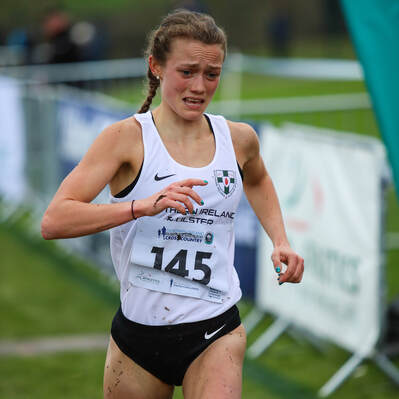
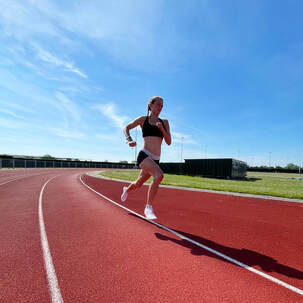
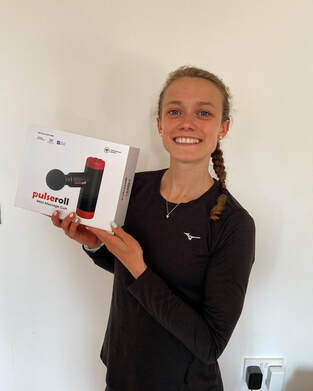
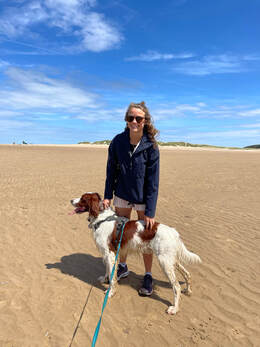
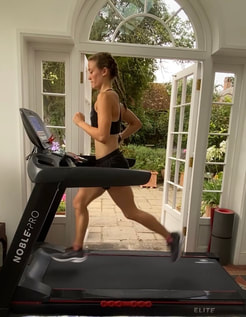
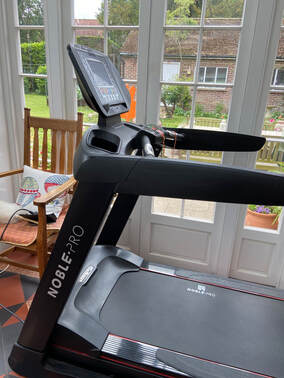


 RSS Feed
RSS Feed
